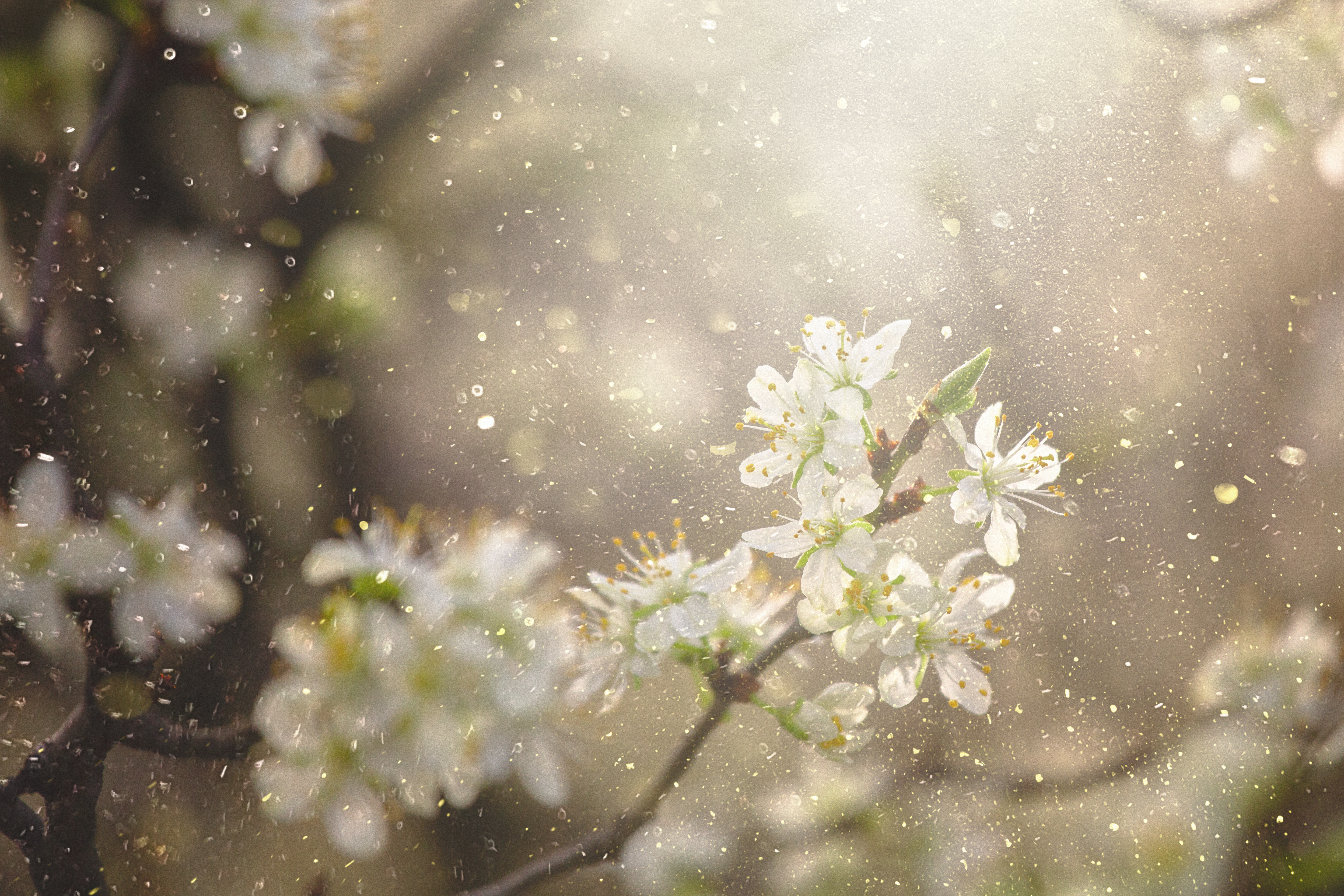'All the floral world wants to do is procreate': Why pollen is nothing to sneeze at
Pollen often hits the headlines for making us sneeze, but it plays a vital role in far more serious matters.


The season is well and truly upon us — and it’s a long one. Those billowing yellow clouds put out by the yews were the first visible sign of the tree-pollen campaign that lasts from March into mid-May. Grass pollens take up the cause into June and weeds sustain it through to September’s end. In the UK an estimated 13 million people are susceptible to pollen and combatting hay fever — allergic rhinitis caused by pollen, or pollinosis — is an industry. Yet all the floral world wants to do is procreate.
Bless you: Five things you probably don't know about pollen
• Pollen is Latin for a fine powder or flour. It was recommended as a palliative in ancient Greece and Rome and, in Egypt, it was ‘a powder that gives life’. As a food supplement, it was known historically as bee bread
• Fossilised pollen dates back to the Devonian period, 350 million years ago
• Pollens ‘represent a unique archive of the Earth’s climatic history,’ says Dr Vera Korasidis of Melbourne University in Australia. Studying fossilised pollens from 56 million years ago, a period of global warming, Korasidis has concluded that, through seed dispersal, plants migrated to cooler and higher areas
• Hay fever was first described and named by physician John Bostock in 1819. A sufferer who tried bleeding, cold baths, opium and vomiting as solutions, he found respite only in sea air
• UK pollen counts, broadcast since 2011, have gone high-tech. Real-time analysis uses polarised- and ultra-violet-light devices to alert asthma and allergy sufferers to high densities
Protected by a sporopollenin coating to resist solar radiation and drying out, every tiny grain of pollen contains two male gametes, each providing an element necessary for fertilisation when a compatible female stigma is encountered. Pollens are males in search of females. Sometimes, bees get there first, carrying grains to the hive to ferment and feed the colony. Otherwise, it might be ladybirds, especially if the pollen comes from flat-topped flowers; the shiny little beetles of the Nitidulidae family that specialise in a pollen diet; or the species of Syrphidae hoverfly that dissolve pollen grains in an enzyme fluid to digest them. These incursions are welcome, for such activity hustles and transmits other grains to their rightful destination.
One insect that benefits from pollen makes no such contribution. The garden spider Araneus diadematus spins its signature wheel of a web to net flies, but captures pollen, too — in significant quantities. Working with fellow researchers in Bern, Switzerland, Dr Dirk Sanders of Exeter University’s ecology and conservation centre has determined that pollen accounts for 25% of its diet. ‘Most people think of spiders as pure carnivores,’ he reports. ‘We’ve demonstrated that the family of orb web spiders feeds on pollen caught in their webs… we need to class them as omnivores. Pollen grains are actively consumed after being coated in a digestive enzyme.’
On the human front, the study of pollen, palynology, extends far beyond the battle against hay fever. There are 380,000 plant species worldwide, all producing pollens with unique DNA and this is proving vital in criminal investigations. Amounts of different pollens can even determine an exact location. An early example was recorded in Austria in 1959, when Viennese analyst Wilhelm Klaus studied the muddy boots of a suspect, finding spruce, willow and alder pollens and fossilised hickory grains 20 million years old — all of which led to the exact spot where the victim was buried. US expert Andrew Laurence has described the pollen print of a region as its fingerprint and pollen analysis became admissible evidence in UK courts in the 1970s.
Leading UK palynologist Patricia Wiltshire, who has provided evidence in some 300 cases, including high-profile murders, describes in her book Traces ‘the imprint the landscape has left on you… pollen, spores and other microscopic material, mixtures of palynomorphs’. One pollen grain ‘might be an orb pitted with tiny holes, while another may be shaped like a dumbbell’. Such grains are ‘the foundation of the stories I unravel… whispers telling me you are lying or twisting truths’.
Perhaps the most dramatic evidence in the modern pollen story was in the trial of Bosnian war criminals. The defence claimed bodies in scattered graves were the result of local skirmishes. On the basis of pollen traces common to all the victims, forensic palynology proved that they had been massacred in a wheatfield and thrown into a mass grave, then later dug up and reburied in different locations to disguise the atrocity.
Exquisite houses, the beauty of Nature, and how to get the most from your life, straight to your inbox.
After some decades in hard news and motoring from a Wensleydale weekly to Fleet Street and sundry magazines and a bit of BBC, Ian Morton directed his full attention to the countryside where his origin and main interests always lay, including a Suffolk hobby farm. A lifelong game shot, wildfowler and stalker, he has contributed to Shooting Times, The Field and especially to Country Life, writing about a range of subjects.
